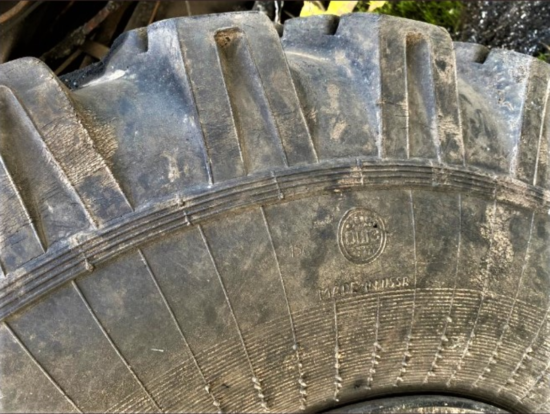Russian Army military tyre problems continue
 In the worst cases, Russian army machinery has been rolling on tyres as much as 31 years old (Photo: Trent Telenko)
In the worst cases, Russian army machinery has been rolling on tyres as much as 31 years old (Photo: Trent Telenko)
Roughly a year after Russia invaded Ukraine, tyre problems remain a significant hindrance for the Russian army. 12 months ago we reported on how tyre selection and product quality had resulted in military machinery literally getting stuck in the mud and Russian military tyres failing on certain occasions. Now, further evidence suggests that long-term tyre maintenance as well as tyre supply problems are causing additional bottlenecks.
When it comes to long-term maintenance, it appears that tyres have not been a priority for the Russian Army. Ask any normal road-going fleet tyre service provider and they will tell you the enormous benefits of tyre husbandry. Of course, downtime is a problem in any logistics-based operation. But in war-time it can make the difference between life and death.
First off, the ultra-violet rays in sunlight age truck tyres. The longer tyres are in service and the greater the vehicle’s uncovered exposure to sunlight, the more significant the degradation. In the worst cases, Russian army machinery has been rolling on tyres as much as 31 years old – with some tyres still bearing USSR insignia. Clearly those tyres are well-past their sell-by date, but military logistics experts suggest that, whenever garaging vehicles is not an option, positioning trucks in close parking arrangements is a sensible preventative measure to reduce sunlight degradation.
Picking up on the reports from a year ago, another big problem for the Russian military fleet is proper maintenance of the armour-personal and missile vehicle’s Central Tyre Inflation Systems or (CTIS). CTIS is essentially the next step up from a conventional tyre pressure monitoring system (TPMS) because it offers tyre pressure alteration and regulation as well.
Of course, CTIS is not unheard of in civvy-street. Civilian agricultural applications, for example, have been growing in prominence in recent years and have been more apparent than ever at recent trade shows. However, CTIS technology has been in regular use in military circles for more decades.
Either way, it is common practice to operate CTIS to see if lines have leaks and to prevent blockages that can sometimes be caused by insect and/or vermin nests. Routine maintenance-orientated operation of CTIS also has the dual-effect of helping keep tyre sidewalls supple, something that reportedly helps mitigate the negative effects of exposure to the environment as well.
Still, in some cases, Russian forces are simply struggling to get enough tyres:
#Ukrainian BTR-4EP IFV with missing wheel, of the 92nd Separate Mechanized Brigade, probably near #Bakhmut, #Donetsk oblast. pic.twitter.com/X6AAFVqS88
— (@praisethesteph) March 12, 2023



Comments